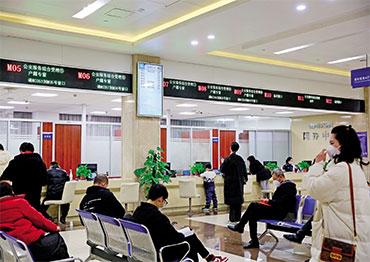According to Li Guoping, dean of the Capital Development Institute at Peking University, the focus of China’s household registration system reform should not solely be on relaxing requirements, but on expanding public services to new urban residents.
In the 20th National Congress report of the CPC released in October 2022, the central leadership called for achieving equal access to basic public services and incorporating it into the overall goal of achieving China’s modernization by 2035. Li said Zhejiang’s new household registration policy is a step in that direction.
In its plan, Zhejiang pledged that it would establish a sounder basic public service system by 2027, in terms of quantity of schools and teachers, affordable housing and medical insurance, which will be based on permanent residency rather than household registration status.
Li said this would tackle the fundamental problem of shortages of public services, which is currently allocated based on the registered population, rather than actual resident population. A typical example can be found in Shenzhen. Dubbed “migrants’ city” and “China’s Silicon Valley,” Shenzhen has a reputation of being one of the most migrant-friendly cities. But at the same time, Shenzhen is also known to have the most competitive high school entrance exams due to a shortage of schools.
Zou said the reason behind the shortage of public services is not due to the lack of financial resources, but of a well-rounded appraisal system for officials. Zou pointed out that under the current appraisal system, growth-related indicators, such as GDP and fiscal revenue, carry more weight, while indicators related to people’s livelihoods, such as education, healthcare, employment and elder care, have relatively low weighting.
“In eastern regions, factors related to public services account for around 30 percent, and in the central and western regions, they only account for around 10 to 20 percent,” Zou said. The result is that local governments are not motivated to increase expenditure on public services.
Another factor is the opposition of existing urban residents, many of whom argue that it is unfair to grant new urban residents of rural origin equal access to public services and welfare benefits in cities when they are allowed to retain their rural land ownership while urban residents continue to be denied such rights.
But for Professor Yin Zhi, people should consider that China’s rural population already paid a heavy price during industrialization and urbanization. “Now that socio-economic development has reached a certain level, we can give back to them,” Yin said.
He argued that extending public service coverage to new residents provides a safety net. “Not all new urban residents will successfully settle down, and if they encounter employment difficulties in cities, they can have a basic livelihood in the countryside,” Yin added.
As government expenditure on public services will only increase incrementally, Yin said the reform could lead to conflicts between existing urban residents and new arrivals, which Yin said will take several years to “smooth out.” “It is inevitable in any major reform, but society needs to evolve,” Yin added.
Cai Fang, member of the 13th National People’s Congress Standing Committee and former vice president of the Chinese Academy of Social Sciences, told NewsChina that if coverage of urban public services is extended to migrant workers, it could provide a much-desired boost to consumption power.
According to Cai, although the average annual income of migrant families reached 42,000 yuan (US$5,833), approaching the average level of 44,000 yuan (US$6,111) in 2022 for urban middle-income groups, their consumption is much lower due to lack of access to urban public services. If they had the same access to public services, their per capita annual consumption could increase by 6,686 yuan (US$910), amounting to an increased consumption of over 1 trillion yuan (US$136.2b) in total.
While many expect Zhejiang’s reform will soon be replicated in more regions, Yin stressed that China’s reform does not aim to give a rural resident the freedom to walk into any city and apply for household registration. “There are prerequisites; they need to achieve stable employment,” Yin said.
Yin pointed out that in Latin American cities, the prevalence of slums is mainly due to rural dwellers moving to the city without sufficient job opportunities, which China tried to avoid with the establishment of a household registration system in the first place.
“The uniqueness of China’s household registration system lies in the historical connection with welfare benefits due to resource scarcity in the past,” Yin said.
“The goal of household registration reform is not to eliminate the entire system, but to delink it from social welfare systems.”

 Old Version
Old Version



